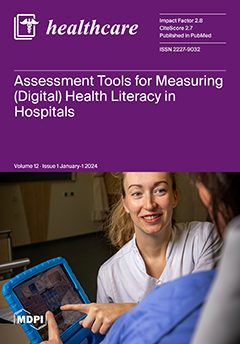Understanding the attitudes of medical staff contributes to shaping a culture of safety in health care. The aim of this study was the measurement of attitudes of nurses and midwives towards reporting clinical adverse events. Various research tools were used, including the Reporting of Clinical Adverse Events Scale (RoCAES; Polish: P-RoCAES), the Justice Sensitivity Inventory, the Feelings in Moral Situations Scale, the Perceived Stress at Work Scale and the Author’s Survey Questionnaire. The cross-sectional survey was conducted from October 2022 to April 2023. The study used assessment-based sampling. The study included 745 midwives and nurses working in internal medicine—surgical wards in nine hospitals in a large provincial city in Poland. One-way analysis of variance ANOVA, post hoc test (Fisher’s NIR), and r-Spearman correlation test were used. The level of significance (
p) did not exceed 0.05. Respondents did not differ in terms of sensitivity to justice, moral feelings, and perceived stress at work, all of which variables were at moderate levels. Respondents’ attitudes towards reporting clinical adverse events in the P-RoCAES were positive (surgical nurses 71.10; internal medicine nurses 72.04; midwives 71.26; F(2.741) = 1.14,
p = 0.319), especially those with a master’s degree, longer work experience and older age. Respondents with a master’s degree were most likely to perceive a benefit from reporting adverse events (P-RoCAES subscale) (F(2.737) = 8.45,
p = 0.001). The longer employment tenure (F(3.716) = 4.63,
p = 0.003) and having a master’s degree (F(2.737) = 3.10,
p = 0.045) were associated with a higher feeling of guilt among the respondents (P-RoCAES subscale). The longer the participants worked, the more positive their attitude became towards the importance of transparency in procedures (F(2.741) = 3.56,
p = 0.029), but the more negative their attitude was towards the benefits of reporting adverse events (P-RoCAES subscale) (r(686) = −0.08,
p = 0.037). Individual attitudes of nurses and midwives as well as their age, length of service or education can influence the formation of a culture of safety in health care (including the reporting of clinical adverse events). Attitudes can motivate corrective action, can be reinforced and shaped by educational programs, good quality management and monitoring system solutions.
Full article






